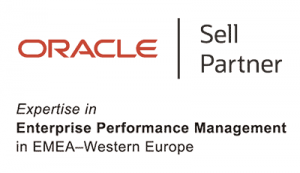Published on July 29, 2020
Can the Future of Remote Performance Management be found in American Sports? A decade on it’s a Second Coming…
Studying high performing individuals has always fascinated me. I have often looked to the sporting world to understand the makeup of a Champion, especially the mindset that enables delivery excellence and success.
The very phrase human capital implies and screams financial value. My argument being that if we value people as much as we all say we do why doesn’t it find its way onto the balance sheet? (I’ll leave that thought to the Accountants out there). But what really is it? how do you identify it? and how do you measure it? The fundamental problem is that performance scoring an individual always involves a high degree of subjectivity. This often leads to the well known phrase of “it’s not what you know, but who you know”.
With Civil Service reform back on HM Government agenda my interest has stirred once more. After all, are we not living in a world where data science rules? so surely we should be able to measure human performance consistently, fairly and accurately allowing for rational informed decision making.
This blog tells the story of an idea conceived over a decade ago that was ahead of its time with the lofty aim of introducing a consistent level playing field across the multitude of HM Government performance management systems, minimising subjectivity, removing subconscious bias whilst objectively demonstrating an individual’s employee value to the organisation.
Back to the 1980’s – Fire Up the Quatro..
When I started my career in Information Technology or Data Processing as it was known in the 1980’s, the key performance metric for career progression was how much you could drink at lunch time and after work with the boss. It was the era of pub culture and if you didn’t drink you weren’t part of the gang. Most importantly if you were not seen to be with the right crowd you just weren’t visible and therefore remembered, with this having a direct correlation to one’s progress up the corporate ladder. This was quite normal.
Such behaviours create and fuels subconscious bias, and this excludes factors such as race, religion and sexuality, which depending upon one’s background and culture are always present to some degree. The workplace was very different back in the 1980’s. Watch “Ashes to Ashes” and you will get a realistic picture of what it was really like.
We have all witnessed individuals who deliver very little value but demonstrate incredible dexterity in understanding politics and leveraging power accelerating their career up the corporate hierarchy. That in itself is a remarkable skill and I have to admit something I have grown to appreciate over time. Just how valuable it is to the organisation itself I still question though?
Equally, how many times have we seen the individual who works all hours, achieves incredible feats of delivery, but is by-passed and over-looked for promotion?
It can be argued the smart ones gamify the corporate system, but for those that don’t want to play and who look to the performance management system to argue their case can only come to the conclusion that it is fundamentally flawed when it falls short.
In the post Covid-19 era, where remote digital working has had to become more widely accepted the perceived disparity for those that are often out of sight and out of mind is only going to increase.
Flaws of Performance Management Systems
The internet is awash with articles citing the flaws of performance management systems with the list below being by no means exhaustive:
What are we trying to achieve through performance management? In its simplest form we are trying to identify, justify and reward those individuals who add value to an Organisation. Equally, we are also trying to identify and justify those individuals who are not contributing and where corrective action is required. However, as people are involved we immediately introduce by default various degrees of subjectivity and bias. Consequently we have a lack of consistency and the playing field becomes uneven.
But what if you could minimise or even eliminate bias? thereby providing a level playing field for all, creating transparency for the employees, and rich operational insight for the Organisation. Sounds like utopia? Possibly, but in an era where data drives everything we are only a stone’s throw away from actually achieving this.
In-fact, some of us were here over a decade ago…
American Professional Sport and Data Science
The underlying thinking for such a solution is not new, in-fact its origins can be found in American professional sport whose use of statistics and measures has been around for what seems the dawn of time.
Over a decade ago I was introduced to a book called “Competing on Analytics – The New Science of Winning” by Thomas H Davenport and Jeanne G Harris, published through Harvard School Press (2007). On first glance you might think this is a technical book, but buried on page 78 there are a couple of paragraphs on how Bill Belichick, Coach of the New England Patriots, outlined his approach to performance measurement and its influence on team recruitment policy. It also touches upon Michael Lewis book “Moneyball”, and how something similar is applied to Baseball. Whilst Moneyball, thanks to the film and Brad Pitt, is well known, Belichick’s approach is not so.
No alt text provided for this image
The New England Patriots were a failing American football team in the 90’s. They were in a very dark place when Belichick was named Head Coach in 2000. He had done his time, with 25 years in various coaching positions in the NFL, including 4 years as the Cleveland Browns as Head coach 1991-1995.
Back in 2000, Belichick’s application of data science created not only a team, but a dynasty that turned a failed franchise into several winning teams that spanned multiple eras, winning six Superbowl’s out of nine appearances over a 20-year period! (I guess it also helped that he had Tom Brady as the Quarterback, but let’s not stray off-piste here)
Belichick’s view was the perfect team was one that could deliver high performance consistently week-in week-out. To achieve this, constant performance measurement of the individuals that comprised the team would be required, but it needed to be a combination of both quantitative (objective) and qualitative data (subjective). It was only when both these elements were combined a common scoring system was created that allowed objective ranking and insight.
Innovation through the measurement of human performance
Belichick’s insight as a Coach was that it wasn’t just how good an individual could throw, catch, block, or move; this was quantitative data that could easily be measured but of equal importance it was how an individual got on with their team-mates; how a player interacted socially; what they were prepared to do for the team; level of egotism; and their intelligence. This second dataset, or intangibles as Belichick refers to them, was devised by a number of coaches subjectively inputting their individual perspective on watching the interaction of an individual with others and attention to detail in terms of research of a players background. In doing so numerous opinions were collated and bias marginalised. No stone was left untouched. Ultimately a player gets one score that represents his value to the team.
The Patriots armed with this new outlook began looking for new talent pools outside the annual college draft recruitment – the accepted route into the NFL. The Patriots would look at smaller less well known colleges; Freeagents – players who for various reasons were out of contract; had been over looked or considered to be past their sell-buy date; and finally the minor leagues like Canadian Football League (CFL), where teams might just possess an individual with the capabilities they were looking for. The added bonus being, that players identified from these new talent pools didn’t cost as much as the primary college draft route. (that’s the “Moneyball” dynamic).
Under Belichick the Patriots installed their “Draft Decision Support System” and applied it to everyone across every talent pool, through the draft and at the Patriots Summer Camp, where additional individuals are invited to participate to try and make the squad for the new season. Rigorous and constant application of the new system combining the new performance datasets determined who stayed and who was cut based upon their individual score and their value to the team.
Eureka! – The birth of EmpIndex
So why couldn’t we apply Belichick’s Draft Decision Support System and evolve it one stage further and create a performance index, just like the Stock Exchange FTSE? In doing so we could objectively measure an employee’s value and link it directly to an Organisation’s objectives, comparing individuals uniformly across the organisation by role.
Consequently, you could minimise subjectivity by creating an index that comprised of both elements – quantitative and qualitative, objective and subjective data. If everyone is scored with the same criteria by job role, assuming this is a true reflection of the work they do, you create a natural index. Whilst you couldn’t refresh this on a daily basis, depending upon the criteria, you could measure on a monthly or quarterly basis, which for this area is virtually real time.
Fundamental Concept – An Individual can Create Value, but can also Destroy Value
A key principle of design is that as much as an individual can add value to an Organisation, they can also be destroyers of value. Negativity, poor attitude, poor performance, creates a negative score. This is absolutely critical in determining the overall score of an individual.
Each factor, regardless whether it is measured by quantitive or qualitative data, has to have an underlying scoring system where it was possible to receive a negative score as an outcome. Technically, behind every factor was a different graph, that allowed a score to be generated between +100 and -100. When all the factors are combined and weighted the final score is produced.
Subsequently, you could create not only a score for an individual, but for a team, a department, and ultimately for the Organisation as a whole. More importantly you could then track this.
2009 – UK Public Sector – An Idea was way ahead of its time
Back in 2009/10 a group of us looked to push the idea of EmpIndex inside HM Central Government and we met with numerous MP’s who were working with Frances Maud at the time around Civil Service reform.
This was an era just before Enterprise Cloud SaaS applications and even thinking like the 9 box-grid didn’t really exist. The most novel thinking was from the 1990’s the 360-degree review, which at this point been around for years but was still not widely adopted.
2009 – Market Testing – SHRM & CIPD Perspective
We presented at the CIPD (Chartered Institute Personnel Development) Conference in Manchester and also locally at several branch events. Despite the idea being both revolutionary and innovative, British Companies, the UK Public Sector and some CIPD members were extremely negative, always highlighting the potential flaws of such a system include, but not limited to:
The points raised were valid, and no-one said we had all the answers as we were pioneering and constantly finding our way.
Our best piece of negative feedback was from a Finance Director of a large Public Sector body who emailed saying, “We cannot measure our people like this, we would have them walking out”. It is at this point you know you have a really good disruptive idea, but the market, especially Public Sector wasn’t ready for it.
However our biggest breakthrough and interest was from a couple of American multi-national companies and SHRM (Society for Human Resource Management), the American equivalent to the CIPD. The Americans culturally simply “just got it” and more importantly saw value in it. SHRM even asked us to participate in developing their standards, but due to our bandwidth we were constrained. A real opportunity lost that I have always personally regretted.
2020 – Elevating Performance Management in Post Covid19 Environment
Now a decade later innovation in performance management systems I would argue is needed more than ever. Not a day goes past where we discussing in the news corporate racism; BAME agenda and lack of opportunities for advancement; unconscious bias; pay gap agenda; whilst we are all having to accept, adopt and adapt to new ways of working enforced upon us by the pandemic. In doing so we need performance management systems that allow us to:
Today in 2020 we are living in an environment where data is driving our everyday decision making. So why not use this for the good and level the playing field for all? Getting individual performance feedback closer to real-time and then leveraging this to keep checking the pulse of the Organisation can surely only be a positive.
A hard lesson in Entrepreneurship – How did it end?
At the time my other Company – Certus Solutions was just about to take off and I didn’t have the funds to push EmpIndex forward. It is a classic example of having a great idea but ahead of its time. Software development is a very capital intensive business. I made the call and wrote off my investment, and a great idea was put on the shelf for another day.
The lesson here is sometimes you can be just too far ahead of the curve. They say “the bankruptcy courts are full of good ideas”. Market timing is everything, and always very difficult to call. But if you don’t test ideas out you never get there, hence why it is important to talk to as many people as possible, even your potential competition, to gauge your chances of success.
An Open Invitation to Pioneer…
EmpIndex was ahead of its time and the market wasn’t ready for this type of solution. However both technology and the market has now moved on at dramatic pace. The need to address the inequalities that we all know that exist and raise corporate capability through diversity and inclusion but based upon performance and the value an individual brings surely must be the new order. We are constantly talking about these topics, but I see very few pragmatic solutions being offered.

Has the time finally now arrived? Is the market now ready for something revolutionary, innovative and disruptive as EmpIndex? Could it be deployed and work effectively inside an Organisation, especially one that works remotely? Is it time to brush off the old prototype from a decade ago? Would the UK Public Sector be ready for something like this now, especially with No10’s increasing appetite for data science?
Just imagine if you could apply artificial intelligence and machine learning algorithms to the data, we would take innovation in this area to a whole new level. What insights and discoveries would we make? This technology wasn’t accessible to ourselves in 2009.
Please let me know what you think as I am genuinely interested to hear and to talk to those who are interested as I have a mountain of research on this subject. The real question for me is am I going to let this stay on the shelf gathering dust? As for No10 you know where I am.
Disclaimer: This is a personal blog. The opinions expressed here represent my own and not those of my employer. In addition, my thoughts and opinions change from time to time and I consider this a necessary consequence of having an open mind. This blog is intended to provide a semi-permanent point in time and as such any thoughts or opinions expressed within out of date posts may not be the same or similar to those that I hold today.














